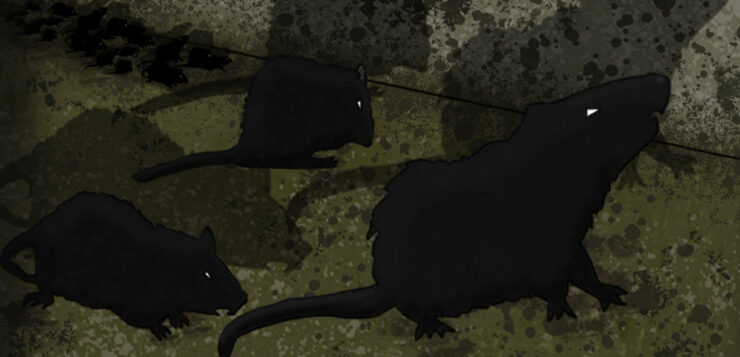The Black Death, commonly referred to as the Plague, was a particularly vicious and deadly disease which ravaged the world for centuries. Originating in East Asia, the bacterium Yersinia Pestis was carried along the silk roads and on trade ships to Europe by the early 1340s. As the disease rampaged across Europe and millions died, this pandemic was the catalyst for major socio-economic and political change in the late Medieval era.
The plague was one of the deadliest pandemics in human history. At its worst in 1347-1351, the disease wiped out up to 60% of Europe’s population. About 80% of those who contracted the virus died and it was very contagious. Possibly 50 million people died in this period alone, and it took some parts of Europe 200 years to recover to pre-plague population levels.
The immediate effect was devastating. Entire families, estates and even whole towns were wiped out in their thousands. Wars were put on hold, as disease could decimate armies before the enemy had the opportunity.
Fear was widespread. Medieval society had very little concept of science and such a pestilence could only be understood as the wrath of God. Fear created anger and an explosion of violence to find a scapegoat for the plague. Jewish communities were targeted, as were lepers, foreigners, beggars and others marginalised in society. Fear of God’s fury also renewed religious fervour and fanaticism, with groups such as Flagellants becoming increasingly popular, driven by those desperate to atone for their sins.
On top of being a staggering loss of human life, the toll taken on the population had long lasting repercussions. Medieval society and its economy was built on agricultural labour and the mutual obligations between the different strata of society. As 90% of the population lived in the countryside, and there were little to no opportunities of social elevation, it was a system which maintained itself.
Such a high death toll obviously had a massive impact on the labour force available to cultivate the land. Due to the nature of supply and demand, this naturally had an effect on the value of the workers that remained. Landowners were forced to raise wages or give other incentives to persuade their workers to stay, lest they go elsewhere in search of better paid work. This saw not only greater movement of peasants as they moved around to find more lucrative work, but a general rise in wages too, contributing greatly to the erosion of serfdom.
With social change came political change. Social and economic improvements in the lower classes, due to a reduction in competition for land and work, gave them bargaining power in the political sphere. In England, this ignited underlying tensions between the peasant and landowning classes, culminating in the Peasants Revolt in 1381, a response to unpopular taxes.
The growing agency of the peasantry saw them leading rebellions against the government for the first time, whereas most rebellions previously had only been conducted by dissenting nobles. This set the trend for a number of popular revolts throughout the next few centuries, including Jack Cade’s Rebellion in 1450, The Pilgrimage of Grace in 1536 and Kett’s Rebellion of 1549, to name but a few. Newfound agency and political consciousness had led to the desire for accountability, fair treatment and greater rights.
Most of these rebellions achieved little, but they are important because of what they tried to do. They are also important because they emerged from the change brought about by the Black Death. The greater socio-economic changes brought about by a horrific loss of life changed Europe forever.




